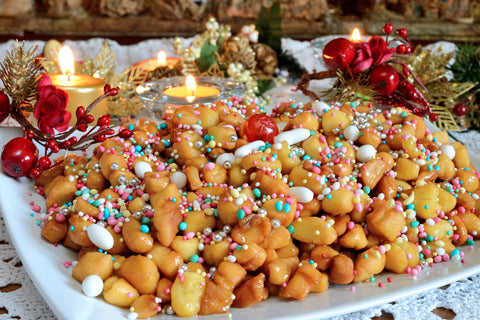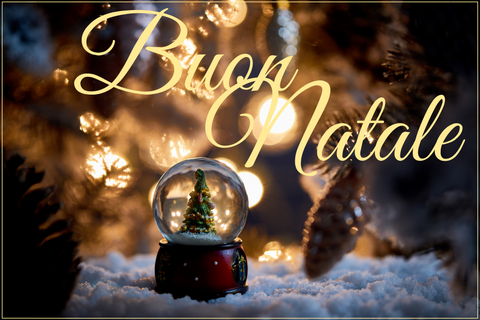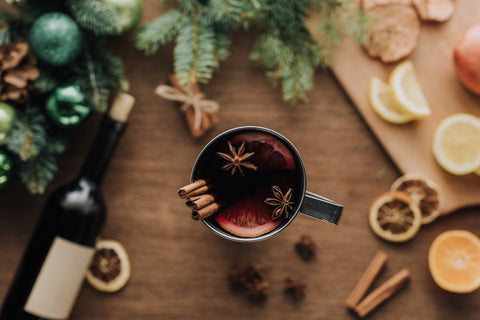Italy has an infinite amount of traditional Christmas treats. One of the most famous are Neapolitan “struffoli”, delicious little fried dough balls covered with honey and sprinkled with sugar confetti.
CHRISTMAS IS THE SWEETEST TIME
If you have a huge sweet tooth, Christmas is the perfect time for a culinary tour of Italy. Each of the 20 Italian regions, has an endless variety of traditional seasonal sweets. Siena – the beautiful Tuscan city – has “panforte” (a medieval cake made with candied fruit, honey, and spices) and “ricciarelli” cookies made with marzipan, candied fruit, and vanilla. Lombardia is home to the iconic Pandoro and Panettone sweet breads. Calabria has the “Fichi Chini,” figs stuffed with dried fruit.
NEAPOLITAN STRUFFOLI
Naples is famous for its Christmas struffoli. They are little fried dough spheres covered with honey or honey and chocolate, then sprinkled with confetti or candied fruit. They can be formed into a tower-shape or can create a giant donut. Sometimes they are served in individual portions.
CALZONCELLI FROM BASILICATA
One of the most popular Italian Christmas treats are “calzoncelli.” They are delicious fried wheat flour bundles stuffed with chestnut cream. Calzoncelli hail from southern Italy, specifically the Basilicata region.
TORRONE
Torrone is one of the oldest traditional Italian Christmas sweets. It seems that this decadent treat originated in the Arab region and gradually made its way to medieval Europe.Torrone is an indulgent nougat candy made from egg whites, honey, and nuts. There are – of course – many varieties to suit any palate! Torrone can be soft, crunchy, studded with nuts or candied fruit, or glazed with chocolate. Some versions are infused with liquor.
GUBANA
Friuli Venezia Giulia – a northeastern Italian region bordering Austria, Slovenia, and the Adriatic Sea – is the home of “Gubana." This is a rich Christmas cake baked in a round, snail-like shape. Gubana is stuffed with dried fruit, walnuts, pine nuts, raisins, and sugar. It is a delicious combination of two cultures: Italian and Slovenian.



